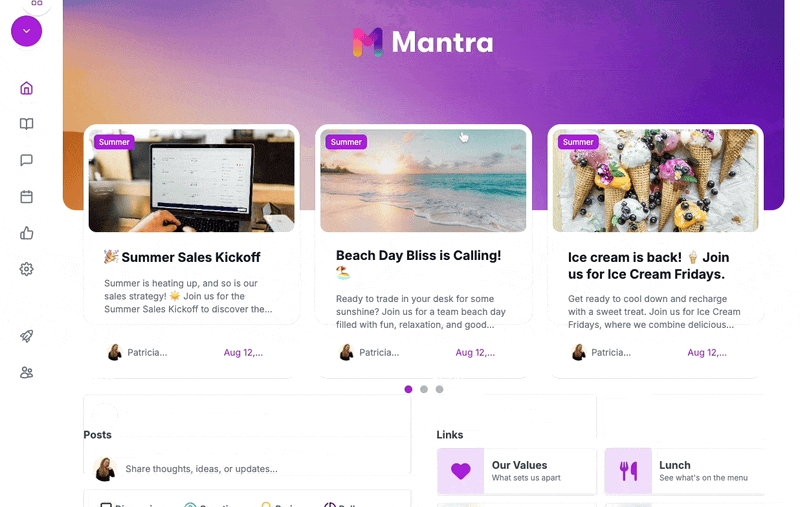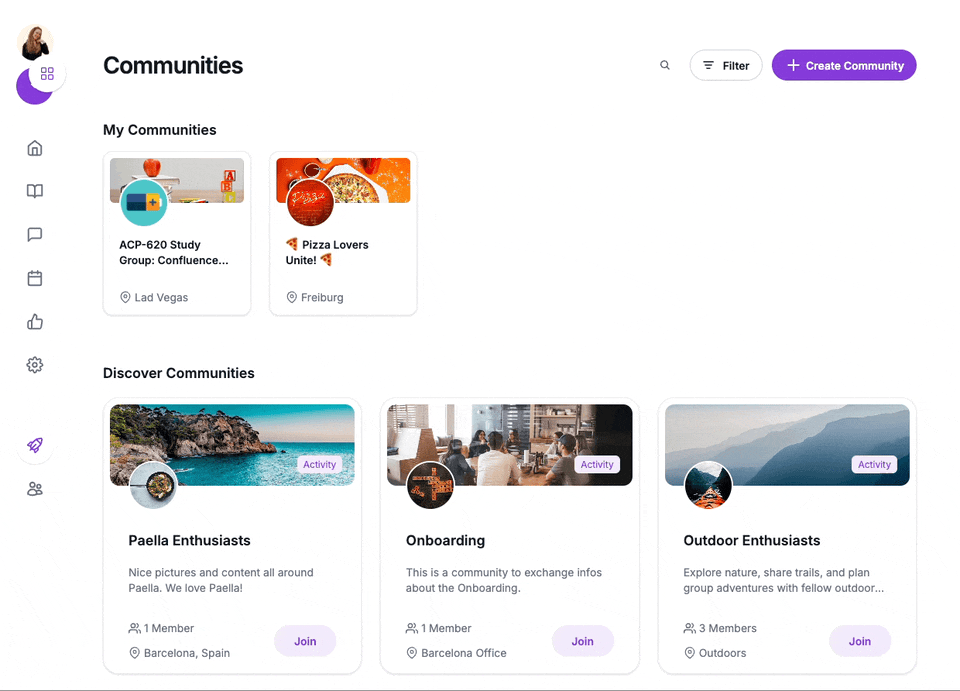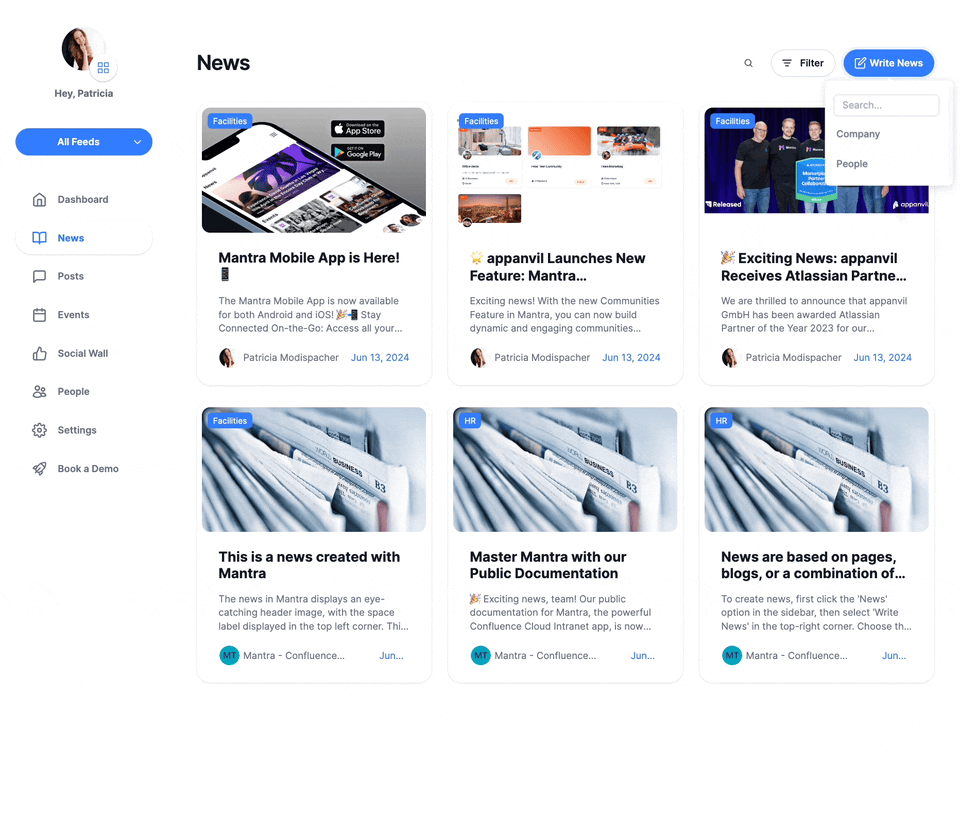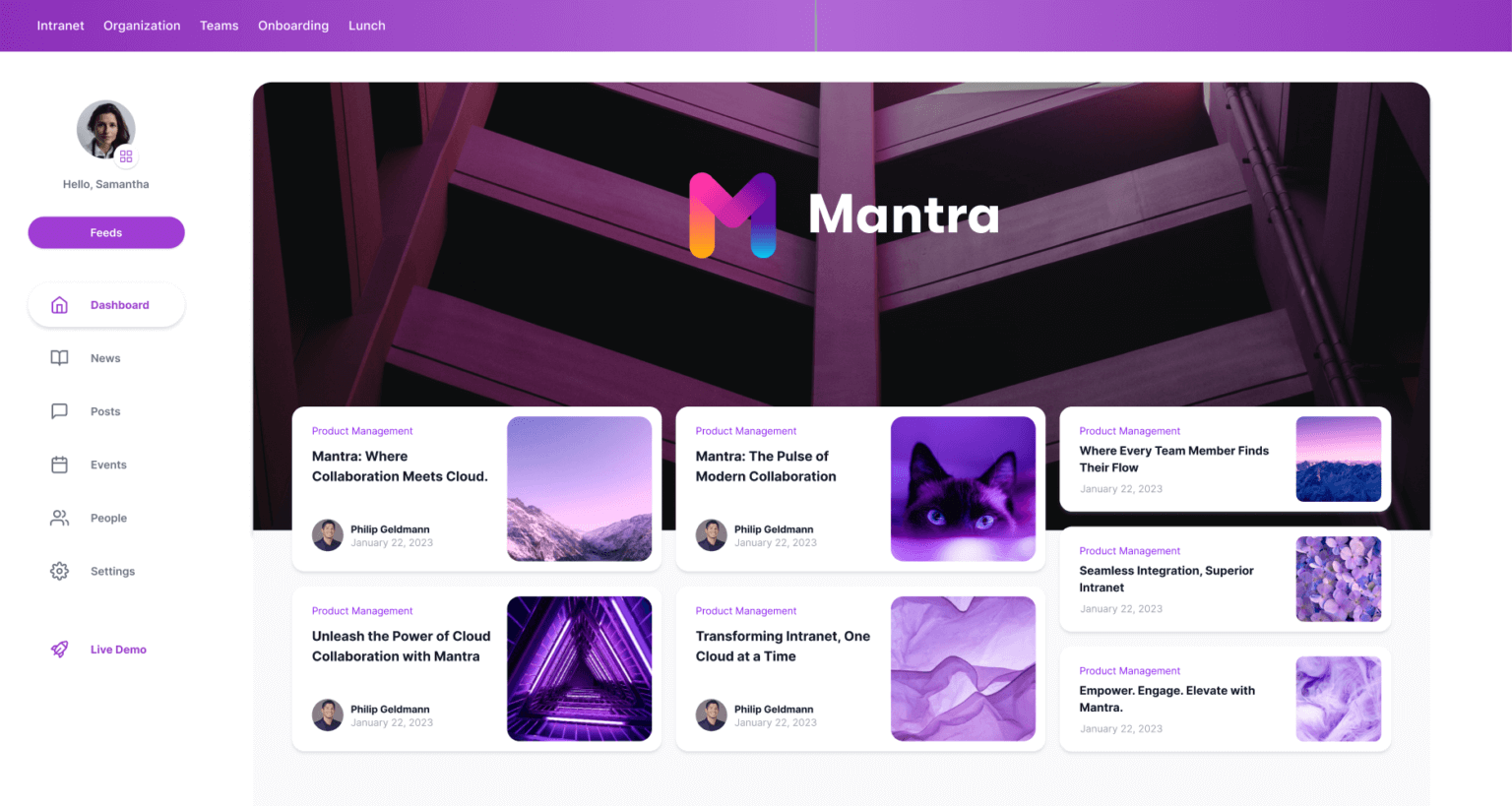The Benefits of Intranet for Modern Workplaces
An intranet can be a game-changer for your business. Find out its benefits and how to use them effectively!
Table of Contents
I never planned to work remotely—but here I am! With the casual chats by the coffee machine and quick hallway updates gone, remote work can sometimes feel a bit lonely. Plus, without those spontaneous interactions, you might find yourself missing key updates or news. One solution? An intranet for your company. In this article, we’ll explore exactly what an intranet is and what benefits it brings to your company.
What is an Intranet?
An intranet is a private, internal website that acts as a central hub for all things related to your workplace. Unlike a public website (extranet) that’s accessible to anyone, an intranet is exclusively available to employees. It offers a secure environment where staff can access important documents, company announcements, and various resources.
A modern intranet is much more than just a digital bulletin board. It’s cloud-based and perfectly suited for large, global companies, allowing teams to connect seamlessly across time zones. Today’s intranets play a vital role in streamlining workflows and breaking down communication silos. In remote work settings, they become essential for collaboration, ensuring that everyone stays informed and fostering a sense of community, no matter where your team is based.

Benefits of an Intranet for Your Company
Studies show that employees who feel their voice is heard are 4.6 times more likely to perform at their best, and an effective intranet can create an environment that supports this empowerment.
Here are some key benefits:
1. Enhanced Communication and Collaboration
An intranet provides a powerful foundation for streamlined, efficient communication, supporting both top-down communication and bottom-up feedback. This feedback culture encourages open dialogue between leadership and employees, fostering an environment where voices are heard across all levels of the organization. By consolidating updates, resources, and project documents on a centralized platform, intranets reduce reliance on scattered emails and missed messages, creating a clear communication channel for everyone.
Through dedicated spaces, forums, and content-sharing tools, employees can access the information they need and collaborate seamlessly across departments, reinforcing an inclusive and engaged workplace.

2. Efficient Knowledge Management
When starting a new job (especially remotely), one of the biggest challenges is knowing where to locate essential resources, from policy documents to past project archives. Here’s where an intranet truly shines. It’s a digital “home base” for your entire company, where new hires and seasoned employees alike can find what they need without navigating endless file folders or chasing down emails.
An effective intranet means fewer hours wasted searching, and more time spent getting things done.
3. Increased Employee Engagement and Culture Building
Research indicates that 16% of Gen Z and Millennial workers have left jobs due to insufficient technology. An intuitive and visually appealing company intranet can significantly contribute to talent retention and maintain high levels of employee engagement.
Through intranet features like news feeds, announcements, and social recognition boards, employees stay connected to what’s happening across the organization. This kind of engagement is particularly important for remote teams who rely on these digital hubs to feel included and updated on company developments.

4. Streamlined Task Management and Productivity
A well-structured company intranet also provides tools that help teams keep track of tasks, deadlines, and milestones more effectively. With built-in calendars, project management tools, and shared task lists, employees can access everything they need to stay organized and aligned on deadlines in one place. Instead of switching between different tools, an intranet consolidates all project-related information.
For remote teams, this centralized organization tool is invaluable. It helps ensure everyone knows who’s responsible for what and when, regardless of where they’re located, keeping workflows smooth and transparent.
5. Strengthened Security and Access Control
One of the key benefits of an intranet over more open communication platforms is its built-in security. By providing an exclusive, secure network, your company can manage sensitive information and restrict access to authorized personnel. This level of control is especially important for large companies with remote and hybrid workforces handling confidential data.
Security protocols, like single sign-on (SSO) and role-based access, ensure that information is only accessible to those who need it. The right intranet also offers auditing features, enabling your IT team to monitor who accessed what information and when, adding a layer of accountability.
6. Building Community at the Workplace
One of the most impactful benefits of a well-designed intranet is its ability to foster a sense of community within the workplace. For employees, a strong community at work isn’t just a nice-to-have; it directly influences engagement, productivity, and retention. In fact, studies show that 76% of employees see their workplace as a community, and 72% believe that feeling part of this community is essential to their well-being and commitment to the organization.
Intranets play a crucial role here by offering spaces for connection, collaboration, and recognition.

7. Reducing Meeting and Inbox Time
An intranet can help reduce the need for excessive meetings and inbox overload by consolidating information, announcements, and updates into one easy-to-access space. Instead of scheduling numerous check-in meetings or sifting through long email threads, teams can post updates directly on the intranet where everyone can see them at their convenience.
Not only does this free up valuable time for focused work, but it also ensures that everyone, regardless of time zone, has access to up-to-date information.
Best Practices for Effective Intranet Management
To ensure long-term success and consistent employee engagement, follow these best practices for intranet management:
Launch Strategy and Adoption Support
The intranet’s success often hinges on its initial launch and employee adoption. From pre-launch teasers to training sessions and ongoing feedback channels, a well-planned rollout ensures employees understand the tool and are eager to use it. For tips on effective launch practices, check out our article on intranet launch strategies.
Keep Content Fresh and Relevant
To keep your intranet valuable and relevant, regular content updates are essential. Imagine an employee logging in and seeing outdated announcements from last year – it sends the message that the platform isn’t actively maintained. To avoid this, schedule regular content reviews, and consider assigning a content owner in each department. For example, your HR team could be responsible for keeping onboarding resources up-to-date, while the marketing team maintains recent press releases or branding guidelines.

Prioritize Personalization and User Experience
To make an intranet engaging, customization is key. Allow employees to tailor their dashboards with widgets, shortcuts, or news feeds relevant to their roles. For instance, a project manager can pin key project updates, team deadlines, and documents for quick access—saving time and streamlining their daily workflow.
By making these options available, the intranet becomes a platform employees actively engage with, rather than just a tool they have to use.
Use Analytics to Guide Improvements
Analytics provide valuable clues about how employees are engaging with your intranet. By tracking which pages get the most attention, you can see what content is truly resonating, like a company blog that garners frequent visits or a project hub that’s become the team’s go-to resource. Use these insights to highlight popular resources on the homepage or update layouts based on user patterns.
If certain pages are rarely accessed, it might be time for a refresh or to make them more visible. Regularly checking these analytics helps you keep the intranet relevant, maximizing engagement and ensuring it meets employees’ evolving needs.
Create Clear Governance and Content Guidelines
A consistent tone and quality across your intranet go a long way in building credibility and engagement. By establishing clear guidelines, you create a shared standard for posting updates, responding to queries, and maintaining a professional tone that reflects your company’s values. Strong governance also clarifies content ownership, making each department accountable for keeping information current. This framework provides a cohesive experience for employees, where they know what to expect and can easily trust the information shared.

Unlocking the Full Benefits of an Intranet
So, if you’ve been wondering about the benefits of an intranet, now you know! An intranet is more than just an internal website; it’s a crucial tool that supports everything from team collaboration to efficient knowledge management and enhanced employee engagement.
Platforms like Confluence and social intranet solutions such as Mantra can help you unlock these benefits. With features for social interaction, task management, and personalized content, these tools make it easier to create an intranet that’s efficient, user-friendly, and aligned with your unique goals.

Supercharge your Confluence
Let’s create something extraordinary together
Schedule a free consultation with our team and let’s make things happen!
Book a demo

I just got 777cbgamedownload, it’s really good!! Let me know what y’all think. Click this to check it out! 777cbgamedownload
Taiking88 dot org, my friends! Another option for your playing. I’m enjoying their service. Give it a try and lets win! taiking88